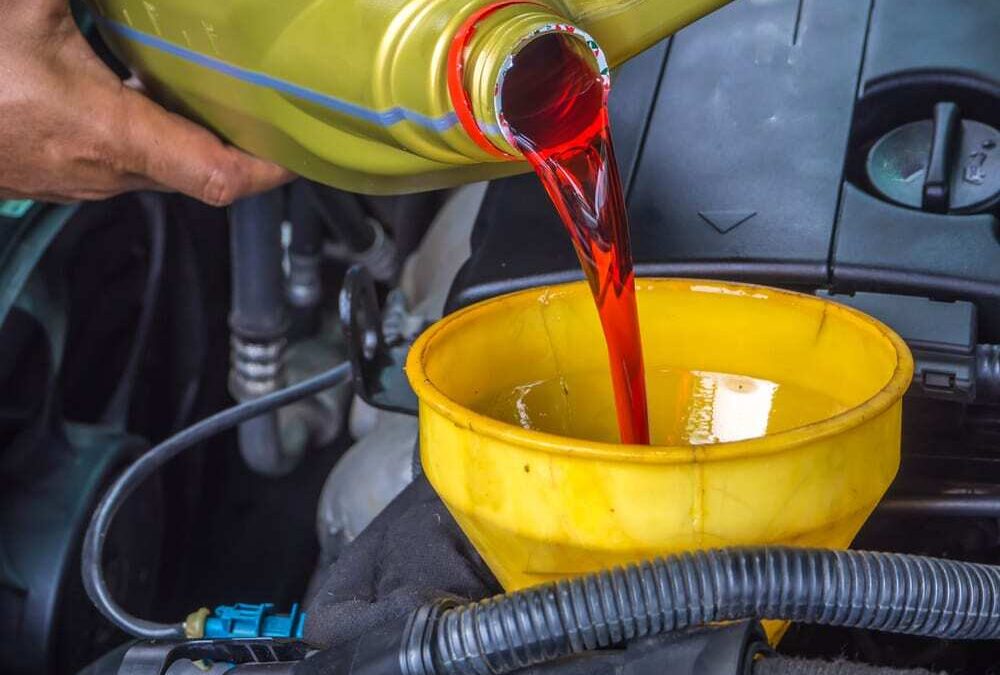Your vehicle’s transmission fluid is like the lifeblood of your car’s transmission system. Yet, most drivers don’t think about it until they have a serious (and expensive) problem. Whether you’re looking to maintain your vehicle, improve performance, or avoid costly repairs, understanding transmission fluid is essential.
In this guide, we’re breaking down everything you need to know: the types of transmission fluid, how often to change it, the signs of bad fluid, and how to choose the right one for your vehicle.
What Is Transmission Fluid and Why Is It Important?
Transmission fluid lubricates, cools, and cleans the internal components of your vehicle’s transmission, ensuring smooth gear shifts and preventing overheating. Without the right fluid, your transmission can wear out quickly, leading to costly repairs or even complete failure.
There are two main types of transmission fluid:
-
Automatic Transmission Fluid (ATF): Used in automatic and some modern manual transmissions, ATF contains detergents and friction modifiers for smooth shifting.
-
Manual Transmission Fluid (MTF): Used in traditional manual transmissions, MTF is often thicker and designed for different gear mechanisms.
Additionally, some vehicles require specialty fluids, such as CVT (Continuously Variable Transmission) Fluid or Dual-Clutch Transmission (DCT) Fluid, which are formulated specifically for those systems.
How Often Should You Change Your Transmission Fluid?
Unlike motor oil, transmission fluid doesn’t need to be changed as often—but ignoring it can lead to big problems. The recommended service interval depends on your vehicle and driving conditions.
General Guidelines:
-
Automatic Transmission: Every 30,000 to 60,000 miles (check your owner’s manual).
-
Manual Transmission: Every 30,000 to 50,000 miles (or as specified by your manufacturer).
-
Severe Driving Conditions: If you frequently tow, drive in stop-and-go traffic, or operate in extreme temperatures like Alberta winters, you may need more frequent changes.
Pro Tip: Some newer vehicles claim to have “lifetime” transmission fluid, but that doesn’t mean it lasts forever. Regular checks can prevent costly damage.
Signs of Low or Dirty Transmission Fluid (And How to Fix It)
Ignoring transmission fluid issues can lead to serious transmission problems. Watch for these warning signs:
-
Slipping Gears: If your car unexpectedly changes gears or struggles to stay in gear, low or degraded fluid could be the cause.
-
Rough or Delayed Shifting: Hesitation, jerking, or hard shifts may indicate dirty fluid or low levels.
-
Overheating Transmission: Transmission overheating can lead to failure; fluid helps keep temperatures under control.
-
Unusual Noises: Whining, grinding, or buzzing sounds could mean your transmission isn’t getting enough lubrication.
-
Burning Smell: Overheated or burned fluid can lead to long-term transmission damage.
How to Check Your Transmission Fluid:
-
Locate the transmission dipstick (if applicable).
-
Pull it out and check the fluid color—it should be red or pink and not dark or burnt.
-
Wipe it clean, reinsert, and check the level. If it’s low, you may need to top it off or flush the system.
Automatic vs. Manual Transmission Fluid: Key Differences
While both ATF and MTF serve the same basic purpose—lubrication—they are formulated differently for their respective systems:
| Feature | Automatic Transmission Fluid (ATF) | Manual Transmission Fluid (MTF) |
|---|---|---|
| Viscosity | Thinner | Thicker |
| Additives | Detergents, friction modifiers | Extreme pressure additives |
| Function | Helps with smooth shifting and cooling | Protects gears from wear |
| Color | Usually red or pink | Often clear, amber, or brown |
Using the wrong fluid can cause shifting problems and damage your transmission. Always check your owner’s manual before adding or changing fluid.
The Best Transmission Fluids for Your Vehicle: A Buyer’s Guide
Choosing the right transmission fluid is crucial for vehicle performance and longevity. Here are some of the best options:
Top-Rated Automatic Transmission Fluids:
-
Valvoline MaxLife Multi-Vehicle ATF – Great for high-mileage vehicles.
-
Castrol Transmax ATF – Suitable for many modern automatic transmissions.
-
Royal Purple Max ATF – High-performance synthetic fluid.
Best Manual Transmission Fluids:
-
Red Line MT-90 – Excellent for high-performance manual transmissions.
-
Pennzoil Synchromesh – Great for GM and Chrysler manual transmissions.
-
Amsoil Manual Transmission Fluid – Provides superior protection.
Always refer to your vehicle’s manufacturer recommendations before purchasing fluid.
Final Thoughts
Transmission fluid may not be the most exciting car topic, but keeping it fresh and at the right level can save you thousands in repairs. By understanding what type of fluid your car needs, when to change it, and how to recognize warning signs, you’ll keep your transmission running smoothly for years to come.
Need a transmission fluid change? Visit your trusted auto repair shop or DIY with the right fluid for your car. Either way, staying on top of transmission maintenance is one of the best ways to keep your vehicle running strong.
Want more expert car maintenance tips? Subscribe to our blog for the latest guides and pro advice!




